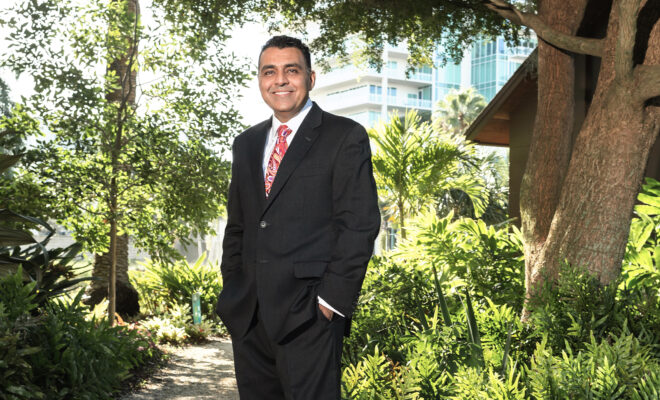
Health & Wellness
InHealth: The Elusive Fountain of Youth and the Dreaded Mirror
By Dr. Sumeet Bhanot, MD, FACS | December 2022
Short of the morning ritual in front of the mirror, the bustle of our hectic lives leaves little time for self-reflection. Until one day we suddenly notice the dreaded signs of aging —how did this creep up on us? Wrinkled, sagging, splotchy skin spurs us to recourse of various creams, lotions, and potions in ornate vessels, hyped by multi-million-dollar marketing campaigns to reverse the ravages of aging. Initial excitement leads to despair as we succumb to the empty promises of the creams.
Pressing on in our journey, our next hope is a non-invasive therapy such as neuromodulators, fillers and laser type machines. Younger patients get pleasing results, however older patients see improvement but are longing for more. The journey, now a quest, leads them to surgery. Many choose the least invasive procedure that promises the elixir of the fountain, such as a minilift. They have the procedure only to find their anticipation falls flat because they look stretched, and a youthful appearance is still out of grasp. Why did this happen?
Do we have an inherent bias, exploited by the marketing campaign that aligns to tell us what we want to hear—youth attained with minimally invasive techniques, cheap, quick and easy?
Understanding begins with the architecture of the face, which consists of a deep bony skeleton with cutaneous ligaments supporting soft tissue made up of deep fat, fascia, and skin. Aging is the disharmonious descent of the three soft tissue elements relative to their ligamentous anchors. The deep fat volume descends and hollows out the upper cheek and lower eyelid area and fills the lower cheek and jowls. This shift changes the facial shape to a heavy lower face and a gaunt upper face. This is a multidimensional problem involving volume shift, loose fascia, and sagging skin; a simple solution is unlikely to correct it.
Non-surgical techniques camouflage aging for the very young yet fail when overcompensation of filler in the upper cheeks and area around the lips creates a cherub-like, distorted appearance. The minilift, again an unidimensional approach, fails miserably by just stretching the skin and leaving the bulk of aging untouched and creating a wind-swept appearance. The traditional SMAS/fascial facelift adds more dimension and addresses the neck and jowl well yet fails to reposition the mid facial volume. Judiciously adding fat transfer can improve it somewhat, but it leaves this lower face fullness uncorrected.
I perform a very rare deep plane facelift, where I release the anchors and reposition the critical facial volume globally in a vertical lift. This addresses the root cause of the asymmetric descent in the face, repositioning all three lamina (fat, fascia, and skin) and restores it to the natural harmonious proportions of the youthful face. In essence, my patients look decades younger yet natural, with soft greater fullness in the upper face and less heaviness in the lower face. The goal is to recreate the original recipe of youth and not compensate by overfilling or overly stretching the skin. You can look at the results yourself and will find they require no explanation or qualifications; they just look right.
Many of my patients that look two decades younger report inexplicably that their family and friends did not realize they had a facelift, only that they look fabulous! As I always say, “dramatic change with subtle results.”
Bhanot Facial Plastic Surgery
Sumeet Bhanot, MD, FACS
2038 Bee Ridge Rd, Sarasota, FL 34239
(941) 966-3223 • sarasotafacialplastics.com



You must be logged in to post a comment Login